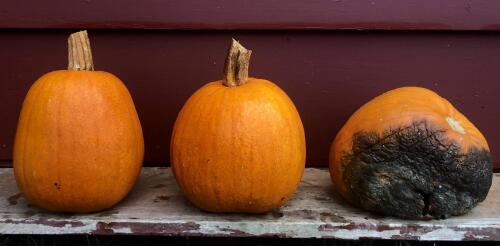Plant pathology
Did you know that the bananas you eat today are not the same type as the ones people were eating a few generations ago? The banana you might have had with your breakfast today is a variety called the Cavendish banana, while the one that was in grocery stores up to the 1950s was a variety called Gros Michel, which was wiped out by a disease called Fusarium wilt of banana, or FWB. FWB of Gros Michel was caused by Fusarium oxysporum race 1, a fungal pathogen that affects bananas. This fungal infection kills a plant by occupying its vascular system, blocking water and mineral transportation. You would be hard-pressed to find a Gros Michel banana in American supermarkets today. krares/iStock via Getty Images Plus Plant biologists developed the Fusarium-resistant Cavendish variety to replace the Gros Michel. Yet, over the past few decades, a resurgence of FWB caused by a different strain of the same fungu...
For many Americans, pumpkins mean that fall is here. In anticipation, coffee shops, restaurants and grocery stores start their pumpkin flavor promotions in late August, a month before autumn officially begins. And shoppers start buying fresh decorative winter produce, such as pumpkins and turban squash, in the hot, sultry days of late summer. But these fruits – yes, botanically, pumpkins and squash are fruits – don’t last forever. And they may not even make it to Halloween if you buy and carve them too early. As a plant pathologist, gardener and self-described pumpkin fanatic, I have both boldly succeeded and miserably failed at growing, properly carving and keeping these iconic winter squash in their prime through the end of October. Here are some tips that can help your epic carving outlast the Day of the Dead. This jack-o’-lantern carved from a pumpkin with a preexisting fungal disease, southern blight, is sho...

